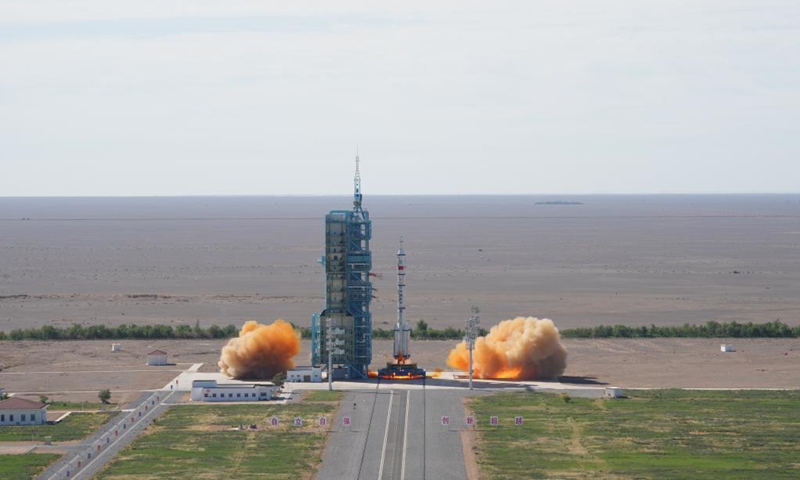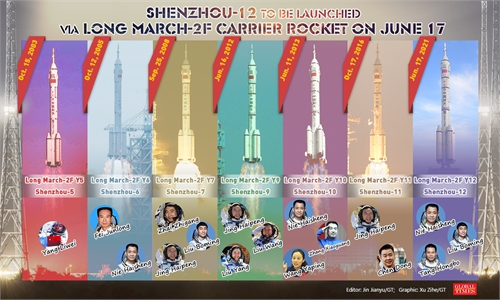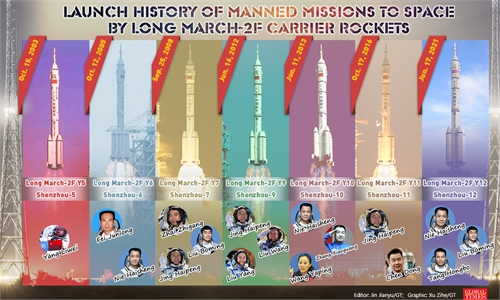SCI-TECH / AIR & SPACE
China's reusable suborbital spacecraft makes successful maiden flight

The manned spacecraft Shenzhou-12, atop a Long March-2F carrier rocket, is launched from the Jiuquan Satellite Launch Center in Northwest China's Gansu Province on June 17, 2021. Photo: Xinhua
China's domestically developed, reusable suborbital spacecraft made its successful maiden flight on Friday, taking off and returning safely back to Earth. Experts hailed the progress in reusable spacecraft as a major step toward developing self-made space planes, having laid a solid foundation for more Earth-space shuttles.
The spacecraft, which was launched from the Jiuquan Satellite Launch Center in Northwest China's Gansu Province, landed at an airport in Alxa Right Banner in North China's Inner Mongolia Autonomous Region.
It served as a flight demonstration and verification project, state-owned space contractor China Aerospace Science and Technology Corp (CASC) announced in a statement on Friday.
The development is an advanced integration of aerospace and aviation technologies, and "indicates China's transition from a big space-faring nation to a strong one," CASC said, reported China Space News, which is co-published by CASC and another industry giant China Academy of Space Technology.
It had laid a solid foundation for reusable space-Earth transportation technology, representing the country's first step to achieve innovative, independent development in this field, the statement said.
The State Administration for Science, Technology and Industry for National Defense shared the news on its official social media accounts, saying that the mission was an "original and leading national scientific research project."
While no images or further details were revealed, the flight soon prompted waves of attention among curious netizens. However, responding to their curiosity, the administration only said, kind of proudly, "This is too advanced to be put on display."
Song Zhongping, a space analyst and TV commentator, told the Global Times on Sunday that suborbital spacecraft, which are used for sending payloads to about 100 kilometers above the Earth's surface, could serve a variety of purposes such as ferrying satellites.
Suborbital spacecraft can also be developed into vehicles for space travel, as they take off vertically and land horizontally, Song noted.
"The most remarkable highlight of this mission is the craft's reusability, since it has verified a number of breakthroughs in materials and technologies that are required in developing a carrier capable of returning safely to the Earth," Song said.
Technologies required for reusable suborbital spaceflights are even more demanding, as the spacecraft had experienced both the environment in space and that under the Earth's atmospheric influence.
"China's mastery of the technologies will greatly boost the research into space planes, having laid a solid foundation for developing one of our own in the future," Song said.
China launched a reusable experimental spacecraft in September 2020 via a Long March-2F carrier rocket from the Jiuquan Satellite Launch Center. After spending two days in orbit, it returned safely to the scheduled landing site.
The successful flight in 2020 marked an important breakthrough for China in reusable spacecraft research, and it is expected to offer convenient and low-cost round trip transport for the peaceful use of space, according to the Xinhua News Agency.


